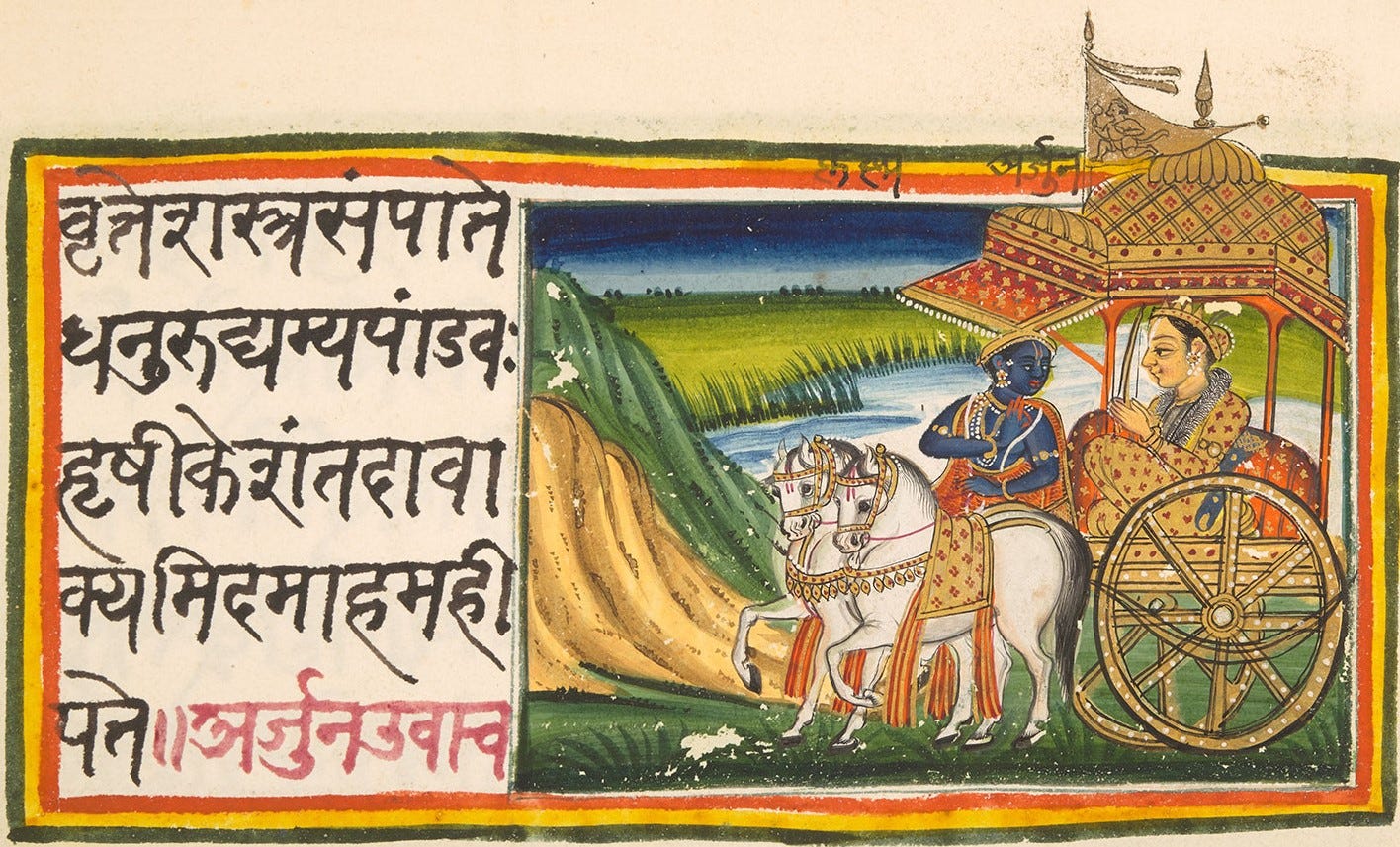On Bhagavad Gita Translations 1.0
Whenever someone new to Christianity asks me to recommend reading, I always recommend something from the scriptures.
There are good theological and practical reasons for this, but one big practical obstacle: the Bible is big. It contains at least sixty-six books and only grows depending on which tradition you draw them from and how you count.
So, I recommend individual books. Depending on the person’s interest and cast of mind Genesis, Exodus, the Psalms, one of the Gospels, or Romans.
When someone new to Hinduism asks me to recommend reading the answer is simple: the Bhagavad Gita. In seven hundred verses it introduces Hindu metaphysics and anthropology. It explains what surrender to God looks like in the realms of knowledge, service, meditation, and devotion. Packaged in an epic setting, with simple plot, and a moving character arc it repackages the Upanishads in fascinating and accessible way.
For translations English fluency is just as important as Sanskrit scholarship, particularly for western readers removed from the world of the Ramayana, Mahabharata, and Puranas. Perhaps this is why the two translations I read the most are by a professor of English literature and a novelist.
Eknath Easwaran’s translation, titled simply The Bhagavad Gita, was the first I read from start to finish. It provides a substantial but unobtrusive apparatus in the form of a general and then individual chapter introductions, a few explanatory endnotes, and a brief glossary. The chapters themselves are presented in paragraphs with verse numbers in a simple and direct style with occasional literary flourish.
Swami Prabhavananda and Christopher Isherwood’s translation Bhagavad-Gita: The Song of God is what I read most these days. Its apparatus is more sparse but immensely helpful with a general introduction, a note on the Gita’s place in context of the Mahabharata, and two excellent appendices ‘The Cosmology of the Gita’ and ‘The Gita and War’. The English is self-consciously literary and alternates in its rendering of the text from poetry to prose frequently. The lack of verse numbers is frustrating at times, but I believe there is another edition which has them. The upshot of the absent versification is that it is easy to get lost in the rhythms of the text, particularly its poetic sections. My edition is from Signet Classics, a slim mass market paperback whose rough pages and matte cover fit easily into any pocket.
Both of these translations lack the robust apparatus of original Sanskrit shlokas and verse-by-verse commentaries common in editions such as A. C. Bhaktivedanta Swami Prabhupada’s Bhagavad Gita As It Is. These are very helpful for detailed study but can be intimidating to first time readers. Also helpful is reading the Bhagavad Gita in its larger context of the Mahabharat. I have only nibbled around the edges of this and the many volumes of Bibek DeBroy’s unabridged translation remain on my shelf taunting me!
My dream Bhagavad Gita? Edwin Bryant is working on it now: The Bhagavad Gita with Commentary Drawn From The Traditional Commentators.


